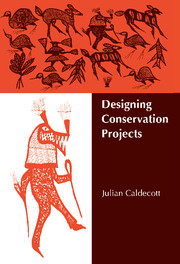Book contents
- Frontmatter
- Contents
- Foreword by Daniel H. Janzen
- Preface
- Acknowledgements
- 1 Introduction
- 2 Baram River, Sarawak
- 3 Cross River, Nigeria
- 4 Siberut and Flores Islands, Indonesia
- 5 Forest fragments in China and the Philippines
- 6 Costa Rican linkage projects
- 7 Irian Jaya, Indonesian New Guinea
- 8 Project themes and practicalities
- 9 Options for conservation
- 10 Options for development
- 11 Options for changing people's minds
- 12 Summary and conclusions
- Glossary
- Bibliography
- Index
7 - Irian Jaya, Indonesian New Guinea
Published online by Cambridge University Press: 04 February 2010
- Frontmatter
- Contents
- Foreword by Daniel H. Janzen
- Preface
- Acknowledgements
- 1 Introduction
- 2 Baram River, Sarawak
- 3 Cross River, Nigeria
- 4 Siberut and Flores Islands, Indonesia
- 5 Forest fragments in China and the Philippines
- 6 Costa Rican linkage projects
- 7 Irian Jaya, Indonesian New Guinea
- 8 Project themes and practicalities
- 9 Options for conservation
- 10 Options for development
- 11 Options for changing people's minds
- 12 Summary and conclusions
- Glossary
- Bibliography
- Index
Summary
Conservation issues
The importance of New Guinea
At about 867 000 km2, and with its Central Cordillera rising above 4500 m, New Guinea is the largest and highest tropical island in the world. People have lived there for some 40 000 years (Nightingale, 1992), and its diverse aboriginal groups speak as many as 650 distinct languages (Silzer & Heikkinen, 1984; Diamond, 1986; Muller, 1990; Suparlan, 1994). Each of these represents a unique human world view, and a set of cultural features and ethnobiological knowledge developed through long experience of local environments in the homeland of each group.
New Guinea lies between the equator and 12° south, just to the north of Australia (Fig. 7.1), with which it shares a common continental shelf (the Sahul Shelf) and many biogeographic affinities. The latter also extend into the Pacific and throughout Malesia (Gressitt, 1982; Chapter 4). The island contains a vast array of natural ecosystems, ranging from alpine meadows and glaciers in the high mountains to lowland swamp forests and coastal mangroves. It is large enough to contain centres of endemism, and there are many cases of local speciation among birds and mammals (Diamond, 1986).
As a whole, New Guinea contains at least 11 000 species of higher plants, 2000 ferns, 200 mammals, 740 birds and 275 reptiles, and somewhere between 50% and 90% of the species in all these groups are endemic to the island (Petocz, 1984; Collins, Sayer, & Whitmore, 1991).
- Type
- Chapter
- Information
- Designing Conservation Projects , pp. 135 - 157Publisher: Cambridge University PressPrint publication year: 1996



